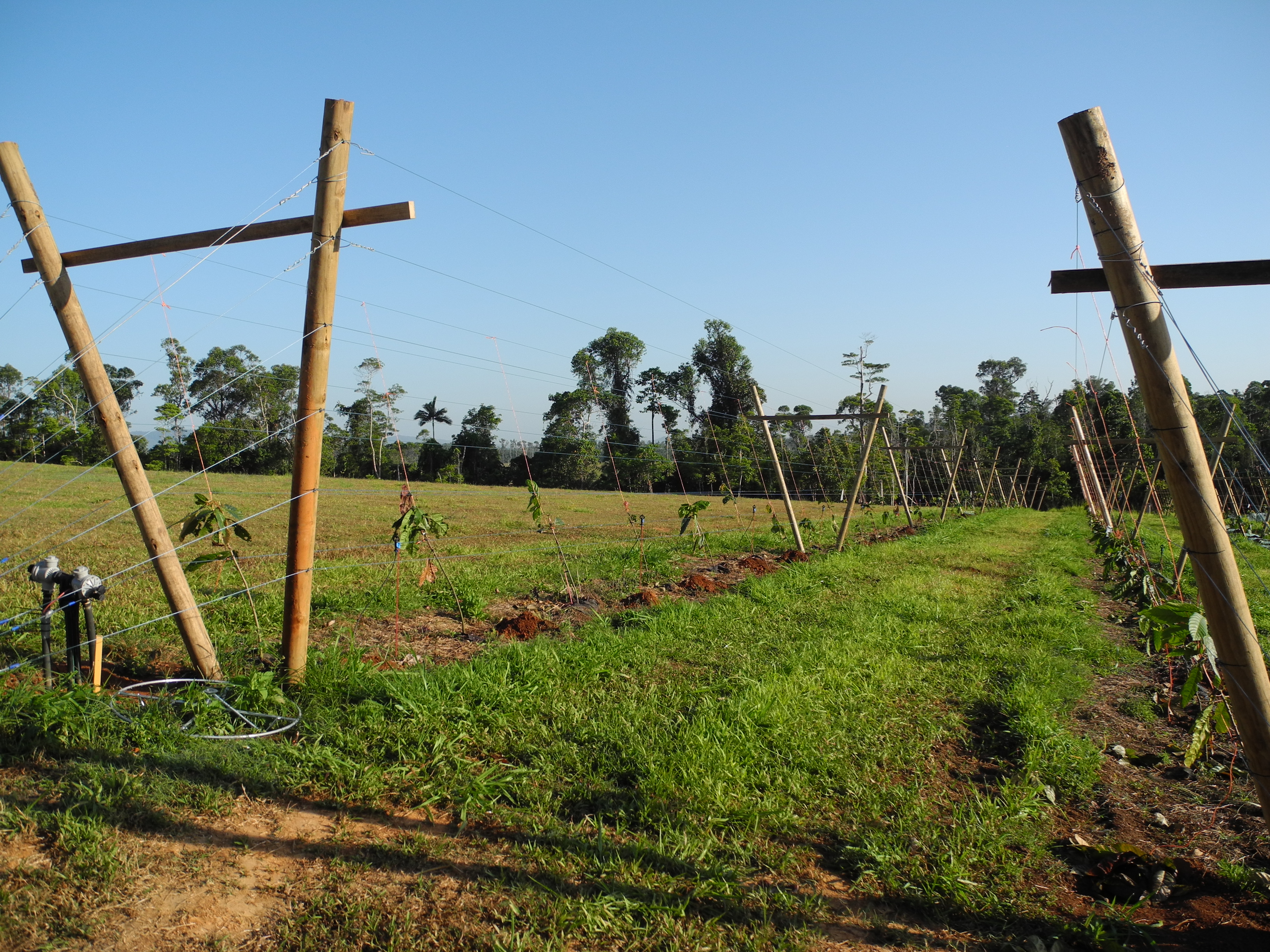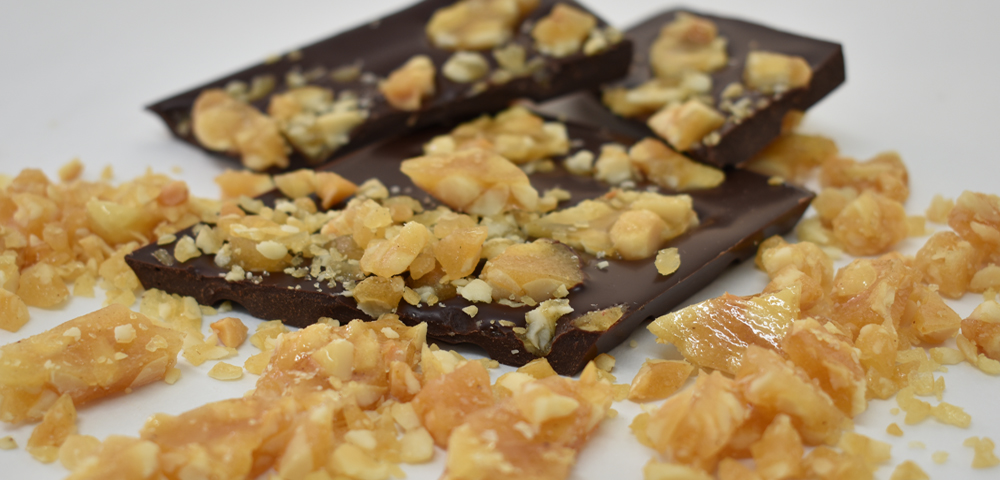Charley's & chocolate

Growing cocoa in FNQ
Mission Beach is in the wet tropics region of Australia at 17.8 degrees south. Theentire coast from the tip of Cape York to as far south as Bowen is subject to cyclones from December to April each year. These cyclones are typically localised and are not much more that strong wind and rain. We occasionally receive category three and above cyclones and these cause damage. Having seen firsthand what 300 km/hour wind can do, making sure the cocoa plantation had survivability built-in was critical.

The modified Tatura trellis system at Mt Edna plantation
Tatura Trellising
To protect the cocoa plants we installed a sophisticated trellis system, an adaptation of the Tatura trellis developed in Victoria’s Goulburn Valley. Originally designed for apples, pears and stone fruit, the trellis was easy to modify for cocoa and helped us cyclone proof the trees. The trellising also aids light penetration beyond the canopy top enabling earlier fruiting, increased yields and easier tree management and harvesting.-dimensional way cocoa trees grow lends itself to robotics harvesting. Australia has high labour costs and we’re exploring using robotics in cocoa harvesting.
In August 2014, less than two years after the seeds were planted at our Mt Edna plantation, we harvested our first cocoa pods and made 50 individually numbered chocolate bars under the Charley’s brand. A pretty proud moment in Charley’s short life!
To increase production, we rented nearby commercial food premises and our first FBM Tempering Machine, originally a learning and training tool, was relocated along with the initial small, granite base conches. Commercial production was up and running! We launched Charley’s first website and shipped orders throughout Australia. Our local retailers also began to stock Charley’s. Soon, our Mt Edna cocoa plantation could not fulfil demand, so we sourced ripe cocoa pods from other local growers and beans from highly reputable growers in the Solomon’s, Papua New Guinea and Vanuatu.
By early 2017, our production facility was too small for future growth, so we modified a shipping container as a modular manufacturing unit (MMU) and installed it in late 2017. In late 2019, we raised new capital to fund more tree plantings and buy new equipment including a second modular manufacturing unit, a larger roaster, a larger conche and a commercial grade winnower.

Charley's today
As at 2024 our factory complex is complete with the ability to significantly increase our chocolate making and cater for an expanding workforce. Our on-premise retail outlet is up and running and the initial vision of Charley’s Australian Chocolate Centre is being realised. Our chocolate range has expanded with additional sourced local ingredients such as Davidson Plum, lemon myrtle. We are always keen to hear from local producers. We have a substantial stable of Australian based loyal wholesalers. We are about to ship our first international order.
In 2018, we added milk chocolate to our range. Most commercial milk chocolates use around 30 per cent cocoa, but Charley’s milk chocolate has 52 or 60 per cent cocoa. In addition to the health and food benefits, a high cocoa content provides a unique chocolate flavour rather than the taste being dominated by sugar and milk.
